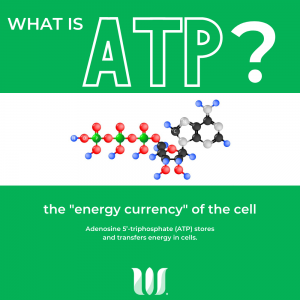Anything that moves needs energy, and the human body is no different. Nutrients consumed in the diet serve as fuel, and the body’s internal assembly line transforms the nutrients through a process called energy metabolism.
What is Energy Metabolism?
Energy metabolism is the process of generating energy from nutrients. Energy in the form of ATP is derived through the breakdown of macronutrients: carbohydrates, fats, and protein.
 Carbohydrates are the primary, preferred source of energy for the body and brain, and they are the first energy source to be used for high-intensity efforts. However, carbohydrates are stored at a limited capacity in the body, so fats can quickly become a secondary source of energy. Fats are able to be stored at a much higher capacity in the body than carbohydrates, and fats are utilized when carbohydrate stores run low during high-intensity exercise.
Carbohydrates are the primary, preferred source of energy for the body and brain, and they are the first energy source to be used for high-intensity efforts. However, carbohydrates are stored at a limited capacity in the body, so fats can quickly become a secondary source of energy. Fats are able to be stored at a much higher capacity in the body than carbohydrates, and fats are utilized when carbohydrate stores run low during high-intensity exercise.
Protein is also broken down to produce energy, but to a lesser extent. Protein is not as easily broken down compared to carbohydrates and fats; protein contains nitrogen atoms that need to be removed before they can be utilized for energy. However, protein also plays important roles in enzyme formation and building, maintaining, and repairing body tissue structure.
Nonetheless, the process of producing energy from any macronutrient involves many different components, including micronutrients, coenzymes, oxygen, and water.
Why Is Energy Metabolism Important for Exercise?
Proper functioning of energy metabolism is especially important for exercise. During physical activity, energy turnover rates are increased above that of resting rates.1 “Energy turnover rate” means exactly what it sounds like – the rate at which the body utilizes energy from macronutrient breakdown. Of course, it makes sense that individuals use more energy when they are moving than when they are resting.
Therefore, physically active individuals tap into energy systems at higher rates than sedentary individuals.1 Energy metabolism is a vital process of the human body. Keeping this system supported by nutrients through the diet is important in its functioning, especially during periods of increased energy expenditure.
B-Vitamins and CoQ10
How B-vitamins support energy metabolism?
B vitamins support energy metabolism within the body. B vitamins – specifically thiamin (B1), riboflavin (B2), niacin (B3), vitamin B6, and pantothenic acid (B5) – are converted to coenzymes in the body. In general, a coenzyme helps to form reactions, and in this case, B vitamins converted to coenzymes are used for breaking down carbohydrates, fats, and protein to produce energy.2 B vitamins are essential micronutrients, meaning they have to come from the diet because the body does not make them on its own.
How does CoQ10 support energy metabolism?
Coenzyme Q10 (CoQ10) is also important for energy metabolism; however, unlike B vitamins and other micronutrients, CoQ10 can be made by the body. CoQ10, also known as ubiquinone, is a fat-soluble molecule that is essential for proper functioning of the body’s cells.3 It is a critical component to electron transport, shuttling electrons across the electron transport chain to form a gradient, which is used to form ATP. Thus, CoQ10 plays an essential role in energy metabolism for exercise.3
CoQ10 also acts as an antioxidant.4 This dual action of CoQ10 is important, because during energy metabolism, reactive oxygen species (ROS) are formed as by-products. Many ROS are free radicals with unpaired electrons, seeking to “steal” electrons from other molecules. Thus, excessive ROS can lead to oxidative stress, and CoQ10 combats that oxidative stress by donating electrons to free radicals so electron theft is no longer necessary.
Foods High in B Vitamins
Food sources of B vitamins come from both animals and plants. Sources of B vitamins vary based on the specific B vitamin, but a few common sources include:
|
|
|
|
|
|
Foods High in CoQ10
Food sources of CoQ10 include:
- Tuna, salmon, and other oily fish
- Liver and other organ meats
- Whole grains
Supporting energy metabolism with the right macronutrients, micronutrients, and coenzymes like CoQ10 is necessary for basic life functions and particularly important to sustain the body’s needs during physical activity.














